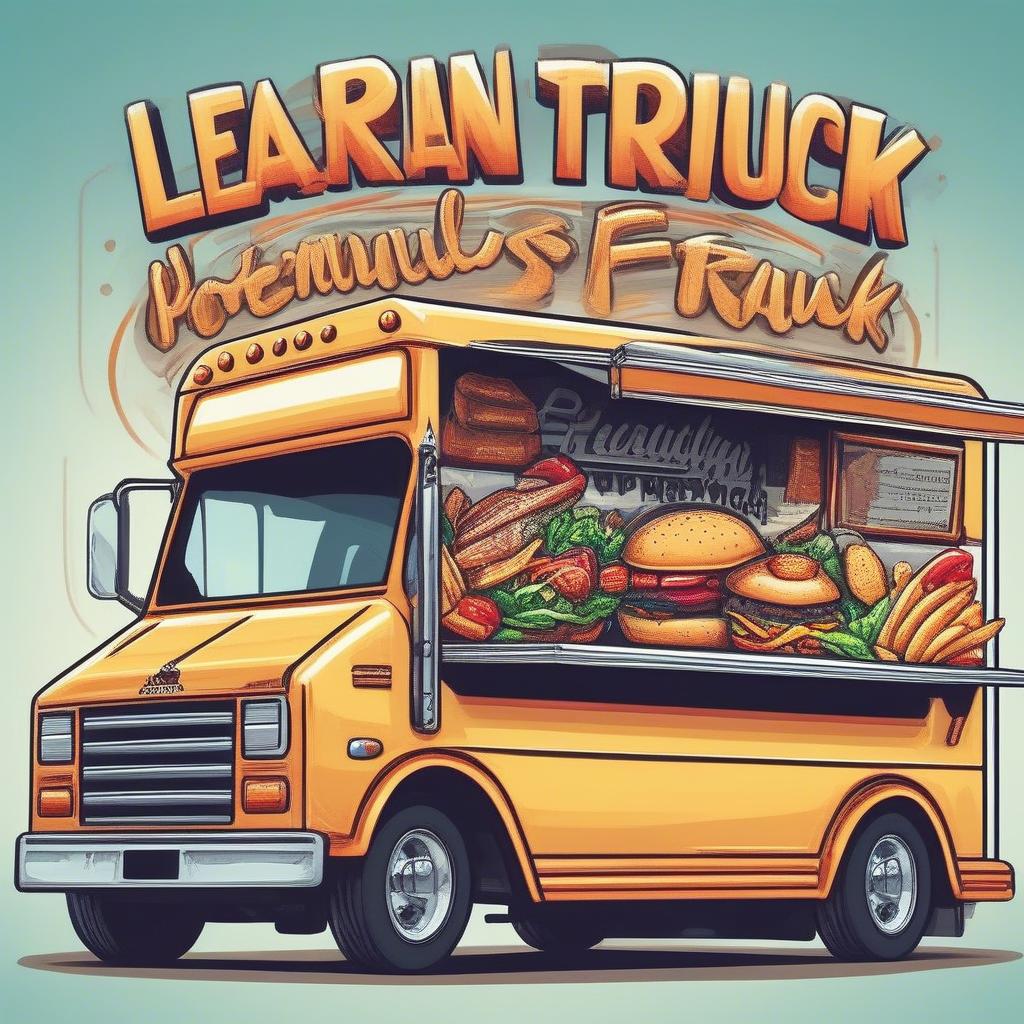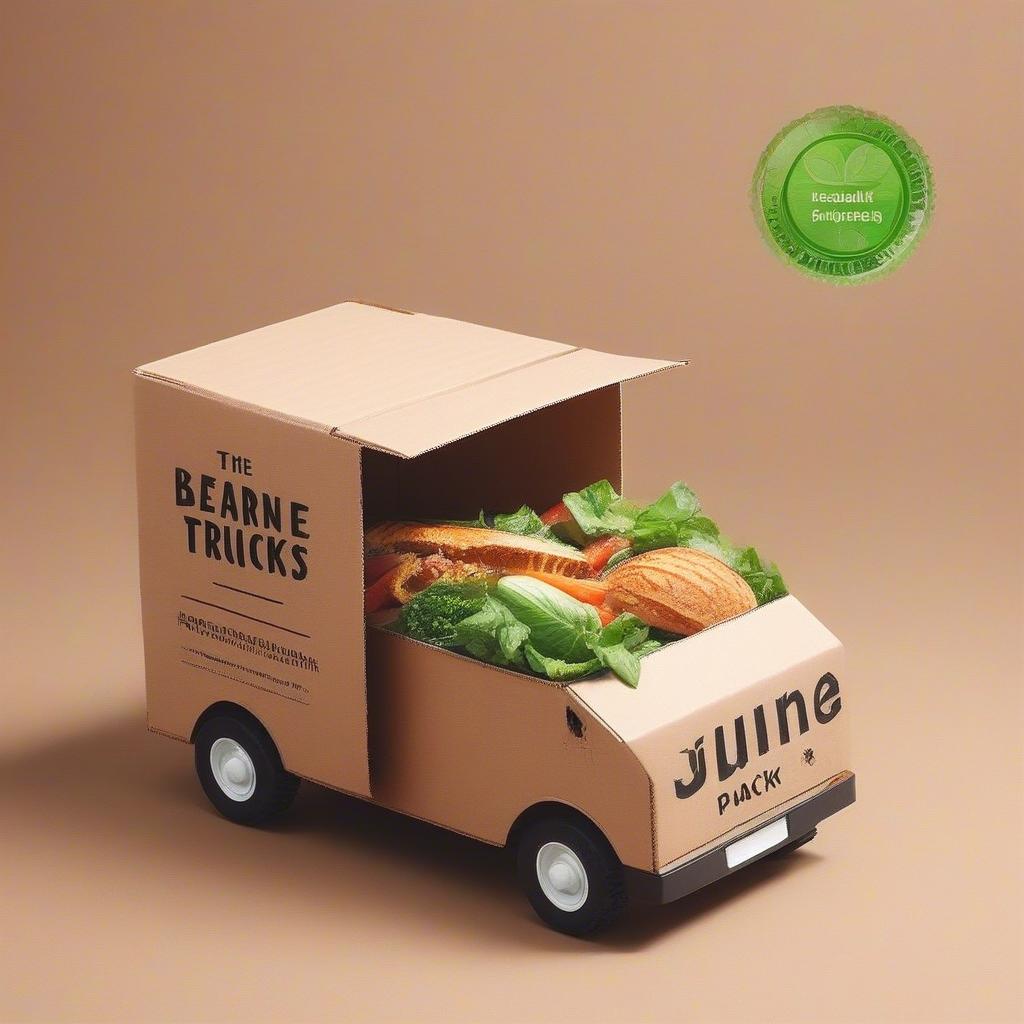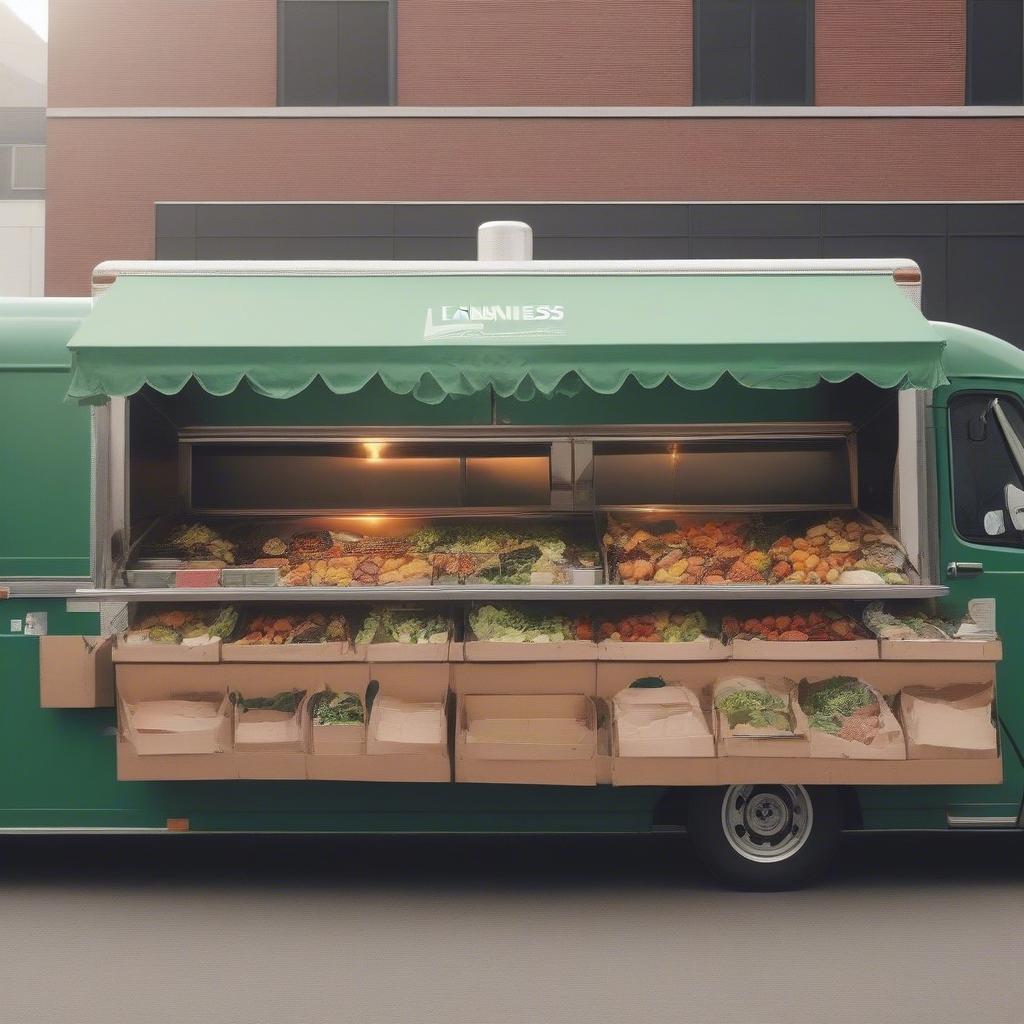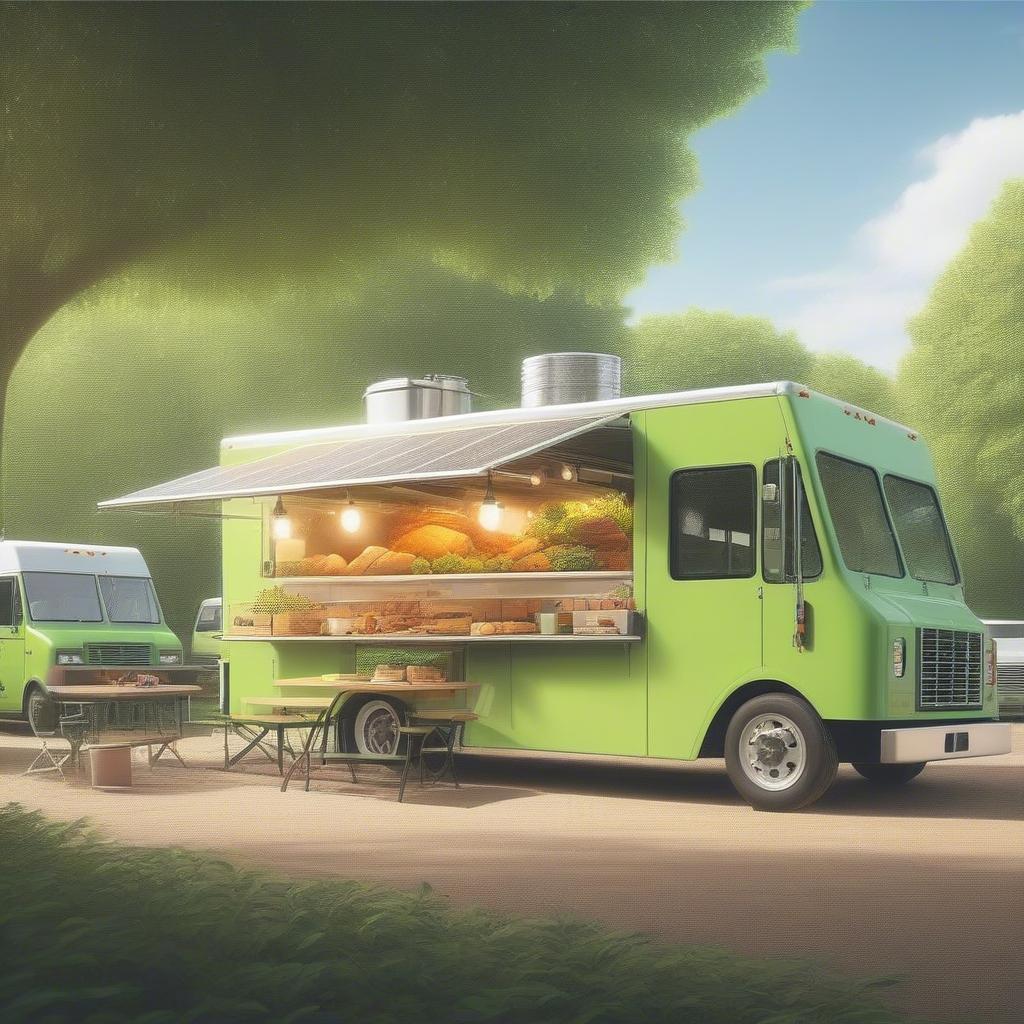
The Secret Sauce to Food Truck Success: Your Menu
A food truck without a compelling, profitable menu is like a car without wheels – it’s not going anywhere. Your menu is the heart of your operation, the first interaction customers have with your brand, and the primary driver of your revenue. It’s not just a list of dishes; it’s a carefully crafted tool designed to attract, satisfy, and keep customers coming back for more. This guide will walk you through the essentials of creating a knockout food truck menu that not only delights palates but also your bottom line.
Why is a Profitable Food Truck Menu So Crucial?
A profitable menu does more than just list your food items. It’s a strategic instrument that affects multiple aspects of your business:
- Attracting Customers: A well-curated menu piques interest, draws in curious foodies, and establishes your brand identity.
- Controlling Costs: Smart menu planning minimizes food waste, utilizes ingredients efficiently, and maximizes profit margins.
- Boosting Sales: By offering a mix of high-demand and signature items, you can encourage repeat business and higher average orders.
- Streamlining Operations: A focused menu simplifies preparation, reduces wait times, and improves overall efficiency.
- Building a Brand: Your menu reflects your culinary personality and helps establish a unique place in the competitive food truck market.
Understanding Your Target Audience: The First Step
Before you even think about what to cook, understand who you’re cooking for. Knowing your target audience will drastically affect your food truck menu design and offerings.
1. Research Your Location
Where will your food truck be parked most often? A downtown business district will attract a different crowd than a suburban park or a late-night entertainment area. Consider factors like:
- Demographics: Age, income level, family status, and cultural background.
- Local Tastes: What are the popular cuisines and dishes in your area?
- Competition: What types of food trucks are already operating nearby? What’s their menu like?
- Timing: Will you be catering to lunch crowds, late-night snackers, or weekend families?
2. Define Your Ideal Customer
Create a profile of your typical customer. Consider their preferences, needs, and budgets. Ask yourself:
- What kind of food are they likely to enjoy?
- How much are they willing to spend?
- What kind of experience are they looking for?
- Are they health-conscious, adventurous, or comfort-food seekers?
Understanding these factors will allow you to tailor your menu design tips and items to your specific audience, maximizing your chances of success.
Developing Your Core Menu: The Foundation of Profit
Once you know your audience, it’s time to craft the heart of your business – the core food truck menu. This is where you’ll put your culinary skills and strategic thinking to the test.
1. Focus on a Niche
Trying to be everything to everyone is a recipe for disaster. Instead, identify a specific niche that you can excel in. This might be:
- A cuisine: Authentic Mexican, gourmet burgers, Southern BBQ, etc.
- A dietary style: Vegan, gluten-free, keto, etc.
- A particular dish: Unique sandwiches, loaded fries, gourmet tacos, etc.
Focusing on a niche helps you build a strong brand identity and become known for something specific.
2. The Magic Number: Fewer Items Are More
Resist the temptation to offer an endless list of choices. A smaller, carefully curated food truck menu has many advantages:
- Reduced Food Costs: Less variety means fewer ingredients to stock, reducing waste and spoilage.
- Simplified Operations: Fewer menu items mean faster prep times and easier kitchen management.
- Increased Focus: Concentrate your efforts on perfecting a few signature dishes.
- Better Customer Experience: Reduces customer indecision and speeds up the ordering process.
Aim for a menu with around 5-10 core items.
3. The Star Players: Your Signature Dishes
Every great food truck menu needs a few standout signature dishes. These are the items that:
- Highlight Your Strengths: What culinary skills or unique recipes do you excel at?
- Create a Buzz: What dishes are most likely to be talked about and shared on social media?
- Become Must-Try Items: What will keep customers coming back again and again?
Your signature items should be profitable, memorable, and representative of your brand.
4. The Support System: Complementary Items
Alongside your signature dishes, you need a few complementary items that cater to different preferences and dietary needs. Consider:
- Sides: Fries, salads, coleslaw, or other side dishes that pair well with your main items.
- Vegetarian/Vegan Options: Having at least one plant-based dish will broaden your appeal.
- Beverages: Offer a selection of drinks that complement your food, such as sodas, juices, or specialty drinks.
- Desserts: A small, easy-to-manage dessert option can boost your average order value.
5. Keep It Seasonal: Fresh and Exciting
Rotating seasonal ingredients into your food truck menu offers several benefits:
- Freshness: Ingredients are at their peak flavor and quality.
- Cost Savings: Seasonal produce is often more affordable.
- Variety: Keeps the menu exciting and encourages repeat customers.
- Marketing Opportunities: Promote your seasonal offerings to attract new customers.
The Price is Right: Costing and Pricing Strategies
Creating a profitable menu is not just about what you sell, it’s also about how you price it. Accurate costing and strategic pricing are essential for long-term success.
1. Calculate Your Food Costs
Knowing exactly how much each dish costs you is critical. This includes:
- Ingredient Costs: The cost of all raw materials needed for each dish.
- Portioning: Standardize portion sizes to control costs and ensure consistency.
- Waste: Account for potential waste and spoilage in your calculations.
Use a spreadsheet or food costing software to keep track of your expenses.
2. Pricing Your Items for Profit
Once you know your food costs, you can determine your selling price. A good rule of thumb is to aim for a food cost percentage between 25-35%. This means that the cost of ingredients should make up no more than 25-35% of the selling price. Consider:
- Competitor Pricing: Research what similar food trucks are charging in your area.
- Perceived Value: Price higher for unique, high-quality, or premium ingredients.
- Market Demand: Adjust prices based on the demand for specific items.
3. Value Meals and Upselling
Offer value meals or combo options to encourage customers to spend more. Train your staff to upsell add-ons or extra items. For example, offer a side upgrade or a larger drink for a slight increase in price.
The Art of Menu Design: Visual Appeal Matters
Your menu is a visual representation of your brand, so menu design tips are key to creating a favorable impression.
1. Keep It Clear and Concise
- Readability: Use a clear, easy-to-read font. Avoid overly stylized or cursive fonts.
- Simplicity: Don’t overcrowd the menu with too much text or images.
- Logical Layout: Group similar items together and use clear headings.
2. Highlight Your Best Sellers
- Visual Emphasis: Use boxes, bold text, or contrasting colors to draw attention to signature items.
- Descriptive Language: Use mouthwatering descriptions that entice customers.
- Appealing Photos: If space allows, use high-quality photos of your dishes.
3. Brand Consistency
- Logo & Colors: Ensure your menu reflects your overall branding, including your logo, colors, and style.
- Theme: Create a cohesive visual theme that ties all elements together.
- Professionalism: A well-designed menu will project professionalism and increase customer confidence.
4. Consider Your Medium
- Physical Menu: If using a physical menu board, ensure it’s durable, easy to clean, and visible.
- Digital Menu: Digital menus offer flexibility and the ability to update easily.
- Online Menu: Make sure your menu is easily accessible on your website and social media pages.
Menu Engineering: Driving Sales and Maximizing Profits
Menu engineering is the strategic practice of analyzing your menu’s performance to identify which items are driving sales and which are underperforming.
1. Categorize Your Menu Items
Use the menu engineering matrix to categorize items based on profitability and popularity:
- Stars: High popularity, high profitability. These are your breadwinners.
- Plowhorses: High popularity, low profitability. Consider ways to increase profit margins (e.g., slightly raise prices or lower costs)
- Puzzles: Low popularity, high profitability. Reconsider the way they are presented or priced or if they align with the customers needs.
- Dogs: Low popularity, low profitability. Remove these from your menu, unless they have a specific purpose.
2. Track Sales Data
Keep detailed records of what items are selling well. Use this data to:
- Identify best-selling dishes.
- Identify slow-selling items.
- Adjust your menu accordingly.
3. Experiment and Refine
Don’t be afraid to experiment with new dishes or adjust your menu based on customer feedback. Continuous improvement is essential to staying competitive.
Learn Business: Your Partner in Food Truck Success
At Learn Business, we understand the unique challenges and opportunities that food truck owners face. That’s why we offer comprehensive resources and support specifically designed to help you build and grow your business.
How Learn Business Can Help
- Tailored Templates: Access a library of customizable templates for menu planning, food costing, financial projections, and more.
- Expert Guidance: Get expert advice and support from our team of experienced business mentors.
- Business Education: Learn essential business skills, including marketing, operations, and financial management.
- Community Support: Connect with a community of like-minded food truck owners to share experiences and learn from each other.
- One-on-One Mentorship: Get personalized guidance and actionable strategies to drive your business forward.
We provide menu design tips templates specifically designed for the food truck business model. These templates can help you design a menu that is not only visually appealing but also strategically crafted for profitability. Our templates include layouts optimized for readability, space management for small food truck operations, and branding integration to ensure your menu is a true reflection of your business. We also offer advice on the best fonts, colors, and graphics to use to attract your ideal customer. Let Learn Business help take your food truck from a dream to a profitable reality.
Conclusion: Your Menu is Your Money Maker
Creating a profitable menu for your food truck is a crucial undertaking that requires planning, research, and continuous improvement. By focusing on your target audience, developing a focused menu, pricing strategically, designing visually appealing menus, and engaging in menu engineering, you can increase your profitability and build a thriving food truck business. Remember, your menu is not just a list of dishes, it’s the heart and soul of your brand. With the right approach, you can create a food truck menu that delights your customers and drives success. And as you embark on your exciting food truck journey, Lean Business is here to help with the tools, templates, and guidance you need every step of the way.



Leave a Reply